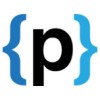Microsoft Data Architect.
Job description
Mandatory Skills: - Azure Data Services like Synapse, ADF, Data Bricks, Data Lake, Delta Lake, SQL Server
Azure Architect:
- 10+ years of IT experience.
- Must have 3+ years of hands-on experience working in the role of a Data Architect in Data Warehousing and business analytics projects with Microsoft technologies.
- Must have 4+ years of hands-on experience in any ETL tool and reporting tool like Azure Data Factory, Synapse Pipelines, SSIS etc.
- Good understanding of SQL and Python code development.
- Good understanding of BI tools like Tableau or PowerBI.
- Good understanding of Azure Data Services like Fabric, Synapse, Azure SQL, ADF, DataBricks, Apache Spark etc.
- Good understanding of Multi-Dimensional Cubes and SSAS.
- Can talk to business users and understand the requirements.
- Must know Data Warehouse and Data Lake concepts.
- Knowledge of SDLC and agile methodologies
- Engage and collaborate with customers to understand business requirements/use cases and translate them into detailed technical specifications.
- Collaborating with stakeholders to understand business requirements and translate them into scalable data architectures.
- Developing and implementing data models, schemas, and ETL processes for data ingestion, transformation, and storage.
- Leveraging Azure data services such as Azure SQL Data Warehouse, Azure Synapse Analytics, and Azure Data Factory to build robust and high-performance data solutions.
- Ensuring data security, compliance, and governance standards are implemented effectively within the architecture.
- Providing guidance and best practices to development teams on data architecture and design principles.
- Monitoring and troubleshooting data solutions to ensure reliability and performance.
- Collaborating with cross-functional teams, including data engineers, analysts, and business stakeholders, to deliver successful data projects on time and within budget.
- Documenting data architecture designs, data flows, and processes to ensure clarity, maintainability, and knowledge transfer within the team and across the organization.
- Creating and maintaining technical documentation, including data dictionaries, system diagrams, and implementation guides, to support ongoing development and operations.


